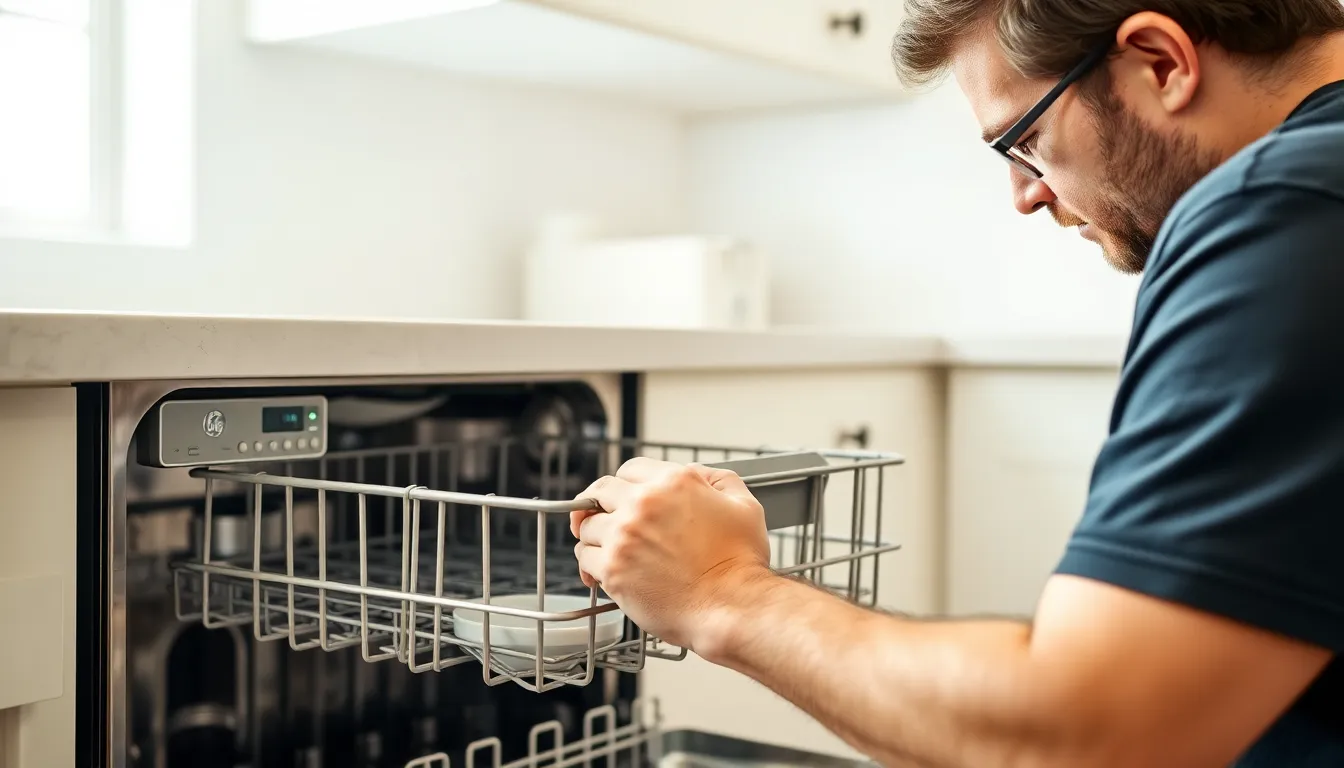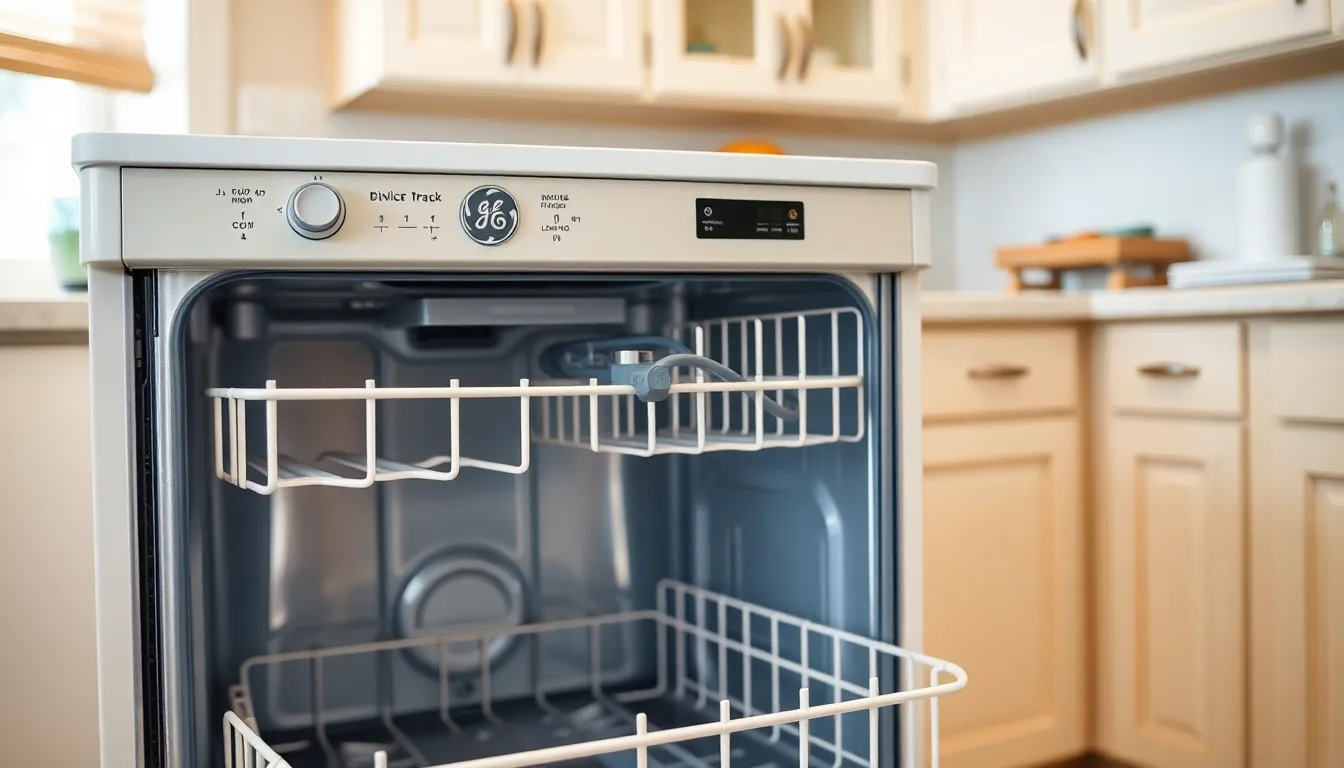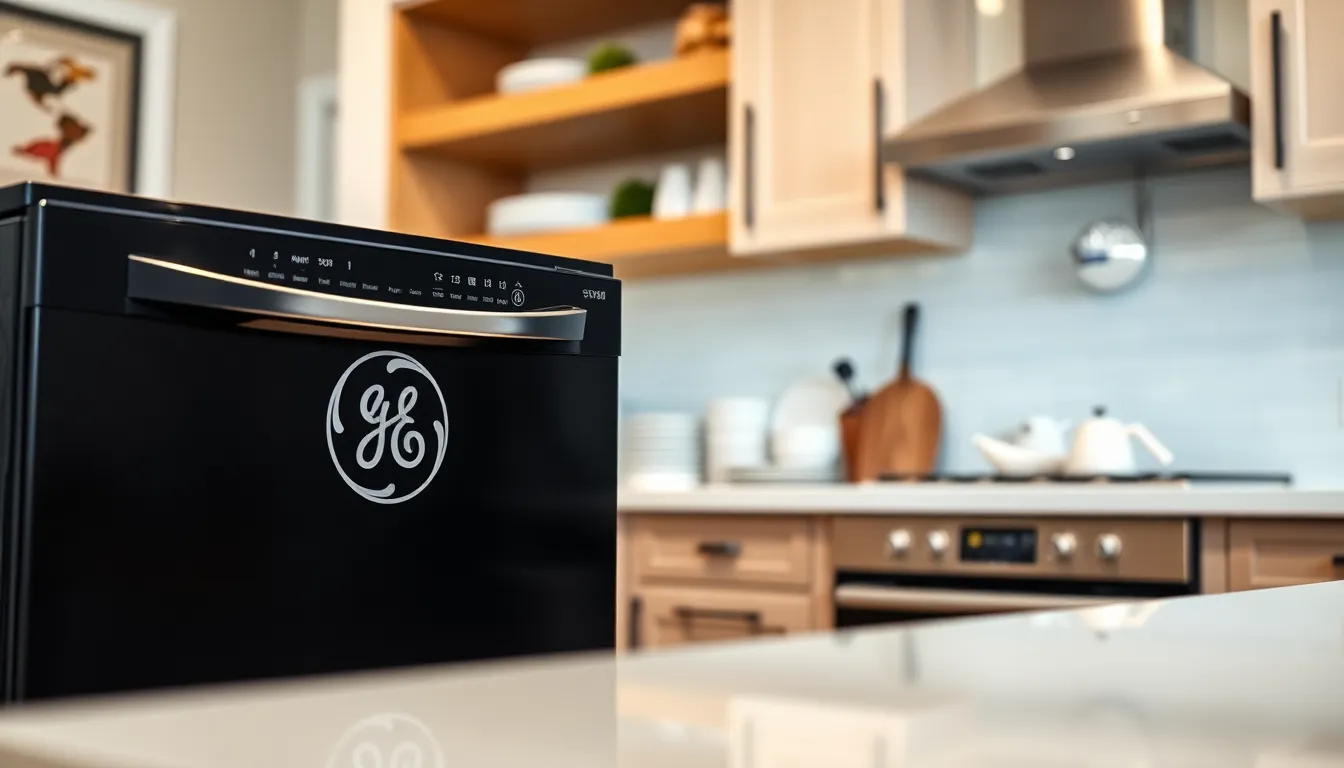Picture this: you’ve just finished a marathon of cooking, and your GE dishwasher is supposed to be your trusty sidekick, ready to tackle the mountain of dirty dishes. But wait—it’s not turning on! Cue the dramatic music.
Don’t panic just yet. This common kitchen conundrum can often be solved faster than you can say “where’s the manual?” From power issues to hidden reset buttons, there are a few tricks up your sleeve to breathe life back into your appliance. So before you resort to washing those dishes by hand—yikes—let’s dive into the possible reasons your GE dishwasher’s gone rogue and how to get it back on track. After all, who wants to face a sink full of dishes when there’s a whole world of takeout waiting?
Table of Contents
ToggleCommon Reasons Why A GE Dishwasher Won’t Turn On
When a GE dishwasher won’t turn on, several factors could contribute to the problem. Understanding these reasons helps troubleshoot effectively.
Power Supply Issues
Most often, the first concern involves power supply issues. Verify the dishwasher is plugged in securely. Check the circuit breaker to ensure it hasn’t tripped. Sometimes, malfunctioning outlets can cause power loss. Testing the outlet with another device confirms functionality. Another potential issue is damaged power cords, which may require replacement.
Door Latch Problems
Door latch problems frequently prevent the dishwasher from starting. If the door isn’t securely closed, the machine won’t operate. Inspect the latch for any signs of damage or misalignment. Proper alignment ensures the door clicks into place. Also, consider that dirt or debris may obstruct the latch. Cleaning the latch could resolve the issue.
Control Panel Malfunctions
Control panel malfunctions can disrupt the dishwasher’s operation. If buttons fail to respond, reset the control panel by disconnecting power briefly. Inspecting the control board for visible damage is essential. Sometimes, loose wiring causes intermittent issues. Reconnecting any loose wires may restore functionality.
Troubleshooting Steps


Follow these steps to identify and resolve issues preventing the GE dishwasher from turning on.
Checking the Power Source
First, ensure the dishwasher is securely plugged into a functioning outlet. If the outlet is dead, test it with another device to confirm. A tripped circuit breaker may also disrupt power; check the home’s electrical panel and reset if necessary. Alternatively, inspect the dishwasher’s power cord for any visible damage or fraying. Damaged cords require replacement to restore functionality. Once all steps are completed, try turning on the dishwasher again.
Inspecting the Door Latch
An improperly closed door can stop the dishwasher from operating. Begin by checking that the door is fully closed and latched securely. If the latch feels loose or unresponsive, inspect it for dirt or debris that might hinder performance. Cleaning the latch area restores function in some cases. If the latch appears damaged, consider replacing it, as this often resolves the issue of a non-starting dishwasher. After addressing the latch, attempt to start the dishwasher once more.
Resetting the Dishwasher
Resetting the dishwasher can resolve minor control panel issues. To initiate a reset, first turn off the power at the circuit breaker for about five minutes before switching it back on. After restoring power, touch the control panel buttons or select a cycle to see if it responds. For some models, holding down a specific button while turning the unit on may trigger a reset. If none of these steps work, review the manual for additional resetting instructions. After completing the reset, try turning on the dishwasher to assess its functionality.
When to Call a Professional
Recognizing when to call a professional is crucial for effectively diagnosing and fixing dishwasher issues. A timely decision can save both time and additional repair costs.
Signs of Serious Problems
Notice unexpected noises during operation? Such sounds often indicate mechanical failures. Persistent issues like leaks or burning smells signal deeper problems. If the dishwasher frequently trips circuit breakers, this could point to electrical issues. Any signs of rust or corrosion inside should raise immediate concerns as these may affect performance. Extended troubleshooting without success often suggests a need for expert assistance.
Finding a Qualified Technician
Searching for a qualified technician involves checking certifications and experience. Start by seeking recommendations from friends or family who have used local repair services. Online reviews can also provide insight into a technician’s reputation. Ensure the technician specializes in GE appliances to guarantee they understand specific systems. Requesting a detailed estimate before service starts will clarify costs. Don’t hesitate to ask questions about the repair process to ensure confidence in their expertise.
Maintenance Tips to Prevent Issues
Regular maintenance keeps a GE dishwasher running smoothly. Implementing a cleaning routine can significantly reduce the chances of operational issues.
Regular Cleaning
Cleaning the dishwasher regularly prevents buildup that can lead to dysfunction. Inspect and clean the filter every month to eliminate debris and food particles. Wipe down the door seals and inner walls to ensure they remain free of grime. Also, run a monthly vinegar cycle to remove mineral deposits and keep the interior fresh. Routine care not only enhances performance but also prolongs the appliance’s lifespan.
Electrical Checks
Checking electrical connections is crucial for maintaining proper functionality. First, ensure the dishwasher is securely plugged into a working outlet. Testing the outlet with a multimeter provides certainty on power flow. Next, inspect the power cord for any damage or fraying. Regularly resetting the circuit breaker can also prevent potential disruptions in power supply. Electrical maintenance contributes to a reliable operation, reducing the likelihood of a breakdown.





